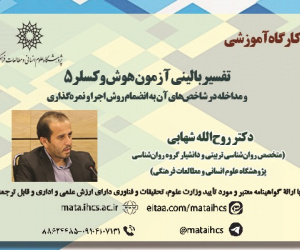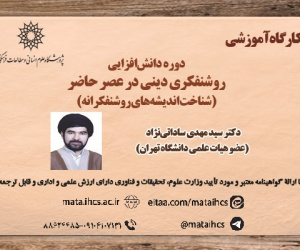واکاوی عناصر مثلث عشق استرنبرگ در طوق الحمامة ابن حزم اندلسی (مقاله علمی وزارت علوم)
درجه علمی: نشریه علمی (وزارت علوم)
آرشیو
چکیده
بسیارند کسانی که در باب عشق سخن رانده اند ولی از اولین کسانی که بدان پرداخته است، ابن حزم، ادیب، فقیه و فیلسوف اندلسی؛ عالم و جامع علوم زمان خویش است؛ او در کتاب طوق الحمامه به صورت بی سابقه و بی مانند به سان روانشناسی به عشق پرداخته است و کتاب خویش را بر سی باب مشتمل نموده و بر هر بابی اسمی قرار داده و در بیان و بررسی این ابواب قلم نهاده است، در سویی دیگر یکی از اندیشمندان حوزه روانشناسی به نام رابرت استرنبرگ رئیس پیشین انجمن روانشناسان آمریکا، عشق را به سان مثلثی می داند که از سه ضلع «صمیمیت » «میل » و «تعهد » شکل گرفته و رابطه هریک از این اضلاع انواع عشق را شکل می دهند. هرچند با وجود غنای ادبیات عربی در مسأله روانشناسی عشق، هنوز به اندازه شایسته ای بدان پرداخته نشده، لذا جا داشت تا بدین موضوع از منظر این نظریه مهم حوزه روانشناسی پرداخته شود. نوشته حاضر تلاش نموده تا به شیوه تحلیلی– توصیفی، این نظریه را که به دیدگاه های ابن حزم بسی نزدیک است، بر کتاب طوق الحمامه تطبیق دهد و بدین وسیله روشن گردد که طوق الحمامه کدامین مؤلفه ها را داراست؟ وکدامیک بسامد بیشتری دارند؟ او در این اثر کوشیده به مدد تجربه شخصی خویش انواع عشق را واکاوی نموده، علل و آفتهایش را بررسی نماید. نتایج بدست آمده حاکی از آن است که عناصر «صمیمیت» «میل» و «تعهد» در کتاب به صورت چشمگیری و به طرق مختلف به شکل داستان گونه در لابلای اشعار آمده اند یا به شیوه نثر نمود یافته اند. همچنین یافته های پژوهش حاکی از انطباق این نظریه بر کتاب طوق الحمامه است، از سویی دیگر در خلال پژوهش عیان شد که شیدایی و عشق آرمانی از بیشترین بسامد در این کتاب برخوردارندAnalyzing the elements of Sternberg's triangular theory of love in the book "Toq al-Hamama" by Ibn Hazm al-Andalusi
Many scholars have explored the concept of love throughout history, but one of its earliest and most profound analysts was Ibn Hazm, the Andalusian writer, jurist, and philosopher. A polymath well-versed in all the sciences of his time, Ibn Hazm addressed the subject of love in his book Tawq al-Hamama (The Ring of the Dove) with unprecedented psychological insight. He structured his work into thirty chapters, each meticulously titled and analyzed, offering a comprehensive examination of love’s various dimensions. Centuries later, psychologist Robert Sternberg, former president of the American Psychological Association, proposed his Triangular Theory of Love, defining love as an interplay of three core components: intimacy, passion, and commitment. The dynamic relationship between these elements gives rise to different forms of love. Despite the richness of Arabic literary discourse on the psychology of love, this subject has not yet been sufficiently explored through modern theoretical frameworks. To bridge this gap, the present study applies Sternberg’s theory—which notably aligns with many of Ibn Hazm’s observations—to Tawq al-Hamama in an analytical-descriptive manner. This article seeks to answer two key questions: 1. Which of Sternberg’s three components (intimacy, passion, commitment) are present in Tawq al-Hamama? 2. Which of these elements appears most frequently? Through textual analysis, the study examines Ibn Hazm’s typology of love, its causes, and its challenges, drawing on his personal experiences and anecdotes. The findings reveal that all three components of Sternberg’s triangle—intimacy, desire (passion), and commitment—are prominently featured in Tawq al-Hamama, expressed through poetic narratives, prose, and introspective reflections. Additionally, the research highlights the adaptability of Sternberg’s theory to Ibn Hazm’s work, while also identifying mania obsessive love) and ideal love as the most recurrent themes in the text.







